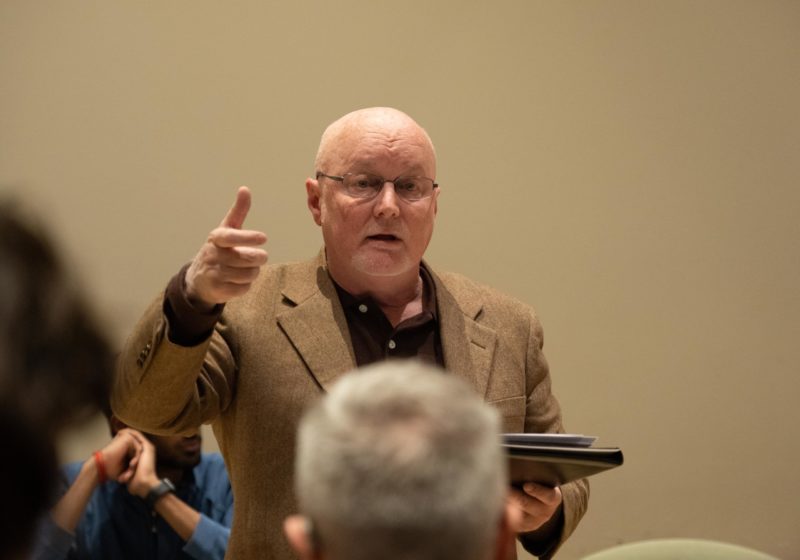On April 15, UR posted an update that outlined the steps the University was planning to take to “sustain operations during the coronavirus pandemic.” Some of these steps included pay cuts and employee furloughs to accommodate for the revenue losses as a result of the virus. The Campus Times spoke with several UR administrations to get a better understanding of how these decisions were made, and who was affected by them.
Early in the crisis, two issues created an intense short-term cash crunch. First, as students living on campus returned home, room and board refunds created a large new expense. Second, the UR Medical Center — the source of around 75% percent of UR’s revenue and expenses in a normal year — needed to spend a lot of money preparing for a potential COVID-19 surge in the Rochester area.
Even though the pandemic did not hit the city as hard as expected, the URMC lost large amounts of its revenue by scaling down patient care as a precautionary measure.
In the long run, the University anticipated increased costs in order to adhere to health guidelines, while also preparing for lower revenue from student tuition and room and board due to expected deferrals and remote learning.
UR Treasurer, Chief Financial Officer, and Senior Vice President of Administration & Finance Holly Crawford said that the University’s budget is very decentralized. In other words, while things like utilities and Public Safety are managed by the central administration, each school within the University manages its own budget and has its own endowment (though endowments are managed centrally).
Consequently, some schools within UR dealt with harsher budget issues than others. For the School of Arts, Science, & Engineering (AS&E), the impact of the pandemic was compounded by a deficit that has persisted for several years.
Dean of the College in AS&E Jeffrey Runner said that most of AS&E’s budget comes from tuition and that for the past few years, tuition revenues haven’t been enough to take care of expenses on their own.
“Several years in a row, that [budget] that we’ve been shooting for hasn’t been reached, and so that budget fall has been going up and up,” Runner said. But in past years, the school has had financial reserves available to make up the difference between revenue and expenses. This year, thanks to the pandemic, that’s not the case.
According to Crawford, a structural deficit means that AS&E’s revenue target wasn’t meeting the costs. The spending target includes a 5.5% endowment draw and is calculated as a five-year average of past revenue. That means that a one-year shortfall from the pandemic isn’t as catastrophic in the short term, but has long-term consequences.
As a result, the University quickly implemented a robust regimen of cost-cutting measures at both the University and AS&E levels.
Some staff members were furloughed over the summer. Capital spending, especially renovations to buildings and new construction, was put on hold. A hiring freeze was implemented, with any essential new hires needing approval from Senior Leadership, as well as a progressive retirement benefits cut, which was indexed to salary. Overall, the Senior Leadership and the President’s Cabinet took an salary reduction of up to 18%, with an average of 13%.
The University also secured new short-term revenue sources, such as the emergency lines of credit and the CARES Act, which provided millions of dollars to the University to offset some of the costs. According to Crawford, the URMC received some help from the Centers for Medicare and Medicaid Services. Additionally, donations helped the University deal with the budget crunch.
For the College of AS&E, their budget issues were addressed differently. Since AS&E consists of academic departments and various academic and non-academic student services, some costs, such as travel costs, were cut due to health guidelines. The rest came from the various departments and offices operating under AS&E.
Cuts to academic departments were made to staff, paid TAs, supplies, and the seed money given to help new professors get started on their research. Faculty in both AS&E and the rest of the University also shared the cost-cutting burden, mostly in the form of retirement benefit cuts, as the University has changed the way they match salaries for employee retirement funds.
How the cuts were made varied school-by-school and department-by-department. Biomedical Engineering professor and co-chair of the Faculty Senate Executive Committee Amy Lerner said that faculty was a part of the process across the University.
“The faculty were engaged in the [decision-making around cuts and saving measures] process,” Lerner said. “None of us are happy about it, but I think a lot of people really understood that it was important for the institution and important to keep the entity afloat, but to do it in a way that was fair to those who might be most impacted by the pandemic.”
The long-term issues that led to the structural deficit in AS&E are being addressed. According to Runner, with the exception of deferrals, the class of 2024 cohort was able to bring in more revenue without decreasing the targets for academic quality or diversity. Admissions stressed that the financial aid budget for this year actually increased compared to last year and that much of the admissions work was complete before the pandemic hit.
Thanks to the pandemic, the University has learned that some employees can work remotely more often, possibly allowing a cut to leased office space in the future. Additionally, AS&E may consider increasing summer programs as a new revenue stream.
Crawford described the measures taken by the University as successful, but emphasized that the results shouldn’t be taken for granted.
“We’re grateful that we’re able to open and start, have students on campus, and be able to have a hybrid experience for our students,” Crawford said. “As you’ve seen in the news, there’s a lot of institutions that haven’t been able to do that […] this is really in students’ hands.”
Editor’s note (9/7/2020): An earlier version of this article stated that the Medical Center used 75% of UR’s expenses and revenue due to COVID-19. Actually, this is their standard budget proportion.
Editor’s note (9/13/20): Several changes have been made to this article.
A previous version said Lerner was a Biology professor. Actually, she is a Biomedical Engineering professor.
A previous version referred to the School of Arts, Sciences, and Engineering as the College of Arts, Sciences, and Engineering, and has since been changed.
A previous version said that Senior Leadership and the President’s Cabinet took 18% salary cuts, insinuating a universal percentage cut. Actually, the cuts were up to 18%, and averaged 13%.
A previous version of this article said “According to Runner, faculty contracts do not allow them to be furloughed or to have salary cuts. Because of this, cuts were instead made to staff, paid TAs, supplies, and the seed money given to help new professors get started on their research.” Faculty members have disputed this, and the article has been changed to reflect their specifications.





